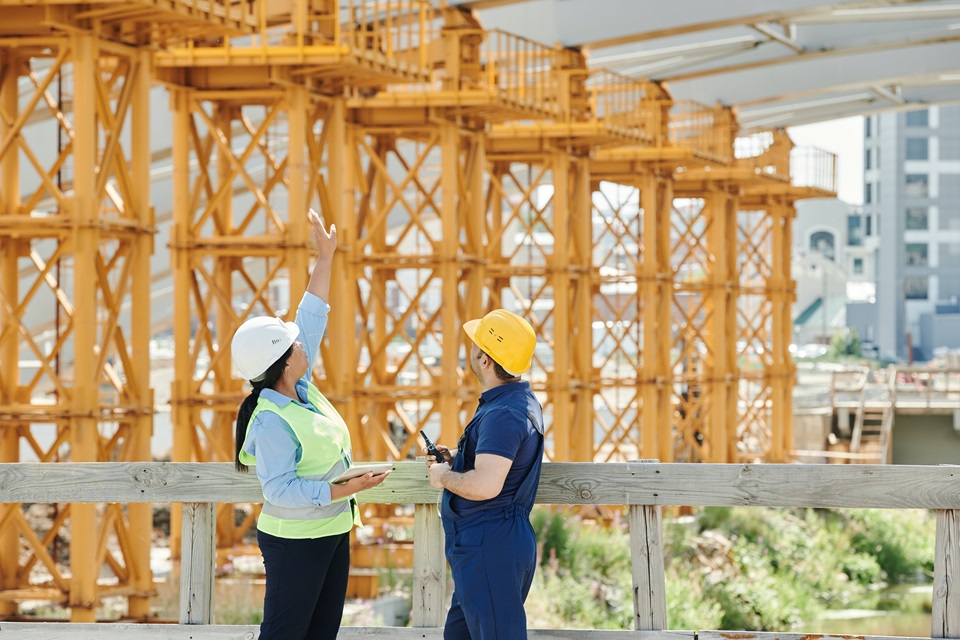Personal protective equipment, or PPE, is essential for keeping construction workers safe from hazards on the jobsite. There are many types of PPE used regularly across UK construction projects, with some that are near-universal, and others used for specialised tasks. By understanding the most common PPE used and its purposes, site managers can ensure workers have the right protection.
Table of Contents
Hard Hats Protect Against Impact & Penetration
The iconic hard hat is one of the most ubiquitous pieces of PPE found on construction sites. Typically made of high-density polyethylene plastic, these helmets protect workers from impacts from objects falling overhead or fixed protrusions on site. They also resist penetration from sharp objects. Hard hats feature different ratings for electrical insulation as well, keeping workers safer if they contact live wires. Most modern helmets include space for attaching accessories like visors, earmuffs and headlamps too. Hard hats certified to EN 397 standards are generally required for all workers on site.
Safety Boots Guard Against Falling Objects & Slips
Sturdy safety boots keep worker’s feet safe from dropped tools and materials, sharp debris, heavy loads and slippery surfaces. They must meet minimum safety standards like EN ISO 20345. Key components are protective toe caps, which resist impacts up to 200 joules, and midsoles that provide puncture resistance. Many feature layers to protect against water and chemicals as well. Specialised safety boots, like those with metatarsal guards and extra ankle support, get used for intense physical work or demolition activities. Proper boots help prevent crushing injuries, sprains and fractures.
High Visibility Clothing Prevents Accidents
Visibility vests, jackets and other apparel serve one vital purpose – making sure equipment operators and vehicle drivers can see workers clearly. Background colours and reflective striping help workers stand out. Such high-visibility clothing prevents many accidents and injuries when operating machinery or vehicles in busy environments. For UK construction sites, high-vis gear needs to meet specifications like EN ISO 20471. Vests typically provide baseline visibility, while jackets add weather protection. Full coveralls take high-vis coverage even further for those directing traffic or working around heavy equipment.
Specialised PPE Tailored To Applications
In addition to the most common hard hats, boots and high visibility items, specialised PPE gets used for numerous construction applications. Examples include safety harnesses and fall arrest gear for working at height, face shields for eye protection, thick gloves for handling rough materials and respiratory gear like dust masks. Hearing protection comes in handy in noisy areas as well. The specific hazards of each job dictate what added PPE gets worn, as per health and safety regulations. Careful hazard assessments by site managers ensures customized PPE for safer work.
Proper Use & Maintenance Is Critical
Simply having the right PPE means little without proper use and care. Managers must train all staff on selecting fitting PPE, inspecting for defects, wearing it correctly all shift, cleaning after use, and reporting any issues for replacement. Facilities for storing gear properly helps keep items in good condition. By instilling strong PPE discipline across the crew and providing adequate equipment budgets, construction firms enable optimal safety performance. Neglecting PPE compliance puts projects and professionals in peril.
From ubiquitous hard hats to task-specific masks and goggles, PPE constitutes an indispensable safety net for construction sites.



